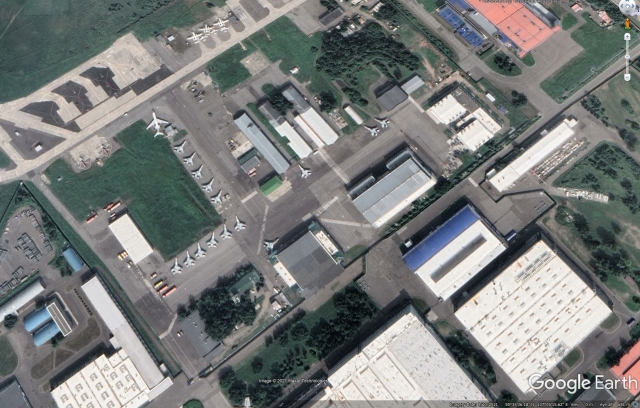According to an ever-increasing number of reports, Iran and Russia will sign a 20-year USD 10 billion defence agreement somewhere this month. Under that agreement, Moscow would supply the Islamic Republic of Iran Air Force (IRIAF) with 24 Sukhoi Su-35 Flanker-E, two S-400 air defence missile systems and a military satellite.
Although Russia’s main arms exporter Rosoboronexport surprisingly declined to comment on this agreement, Iran’s Mehr News Agency reported that Russia is ready to sell the Su-35 Flanker-E to Iran. If the billion dollar deal will materialise, remains to be seen, but it is not unlikely.
In recent Google Earth footage of the KnAAPO Aircraft Plant in Komsomolsk-on-Amur, where the Su-35 is produced, fifteen airframes can be seen. These are all part of an order placed by Egypt. The al-Quwwat al-Jawwiya Il Misriya (EAF, Egyptian Air Force) had originally 24 to 30 Su-35s on order, seven of which have been noted by Scramble Magazine so far and these are ready to be delivered.
However, Egypt was put under tremendous pressure by the US government and the threat of sanctions against Cairo under the Countering America’s Adversaries Through Sanctions Act (CAATSA) seems to have persuaded the Egyptians to abandon the acquisition altogether.
Russia announced earlier that it had signed deals with Indonesia and Algeria on the delivery of the Su-35. In February 2018, Russia and Indonesia finalised a contract for eleven aircraft, valued at USD 1,14 billion. In December 2021, Indonesia officially confirmed that it abandoned the Su-35 acquisition plans and is pursuing the procurement of the French-build Dassault Rafale, the switch again instigated by looming US sanctions. The al-Quwwat al-Jawwiya al-Jaza'eriya (Algerian Air Force), in turn, decided to upgrade its existing fleet of Su-30MKA already supplied by Russia from 2007 onwards. This leaves China the only export customer so far of this 4.5 generation multi-role fighter.
The availability of the aircraft for Iran does not guarantee their delivery to Iran, however. It remains unclear how Iran will pay for these advanced fighters and even of a greater importance is if the Iranian Republican Guard Corps (IRGC) will allow the IRIAF to operate such a powerful weapon. Internal rivalry between the IRIAF and the IRGC is not uncommon.
Much needed upgrade
The IRIAF could really use upgrading their arsenal of fighter aircraft, the current fleet consists of mainly US-built fighters delivered in the 1970s like the F-14A Tomcat, F-4D/E Phantom II, and Northrop F-5E/F. These were augmented during the 1991 Persian Gulf War when defecting Iraqi pilots took their Dassault Mirage F-1BQ/EQ, Sukhoi Su-22M4 and a small number of Mikoyan MiG-29 Fulcrum to Iran. Later, Russia and China provided some additional MiG-29s and Chengdu F-7F/FT-7Ns respectively. According to some sources 32 Iranian pilots are already undergoing Su-35 training in Russia and there are further rumours that helicopter deliveries are also part of the agreement. How future training will be executed is unclear. The current training fleet of ageing PAC Super Mushshak, EMBRAER EMB312 Tucano, Pilatus PC-7 and F-5 does not seem to be sufficient for a modern fighter like the Su-35.
Image: Google Earth 13 August 2021


